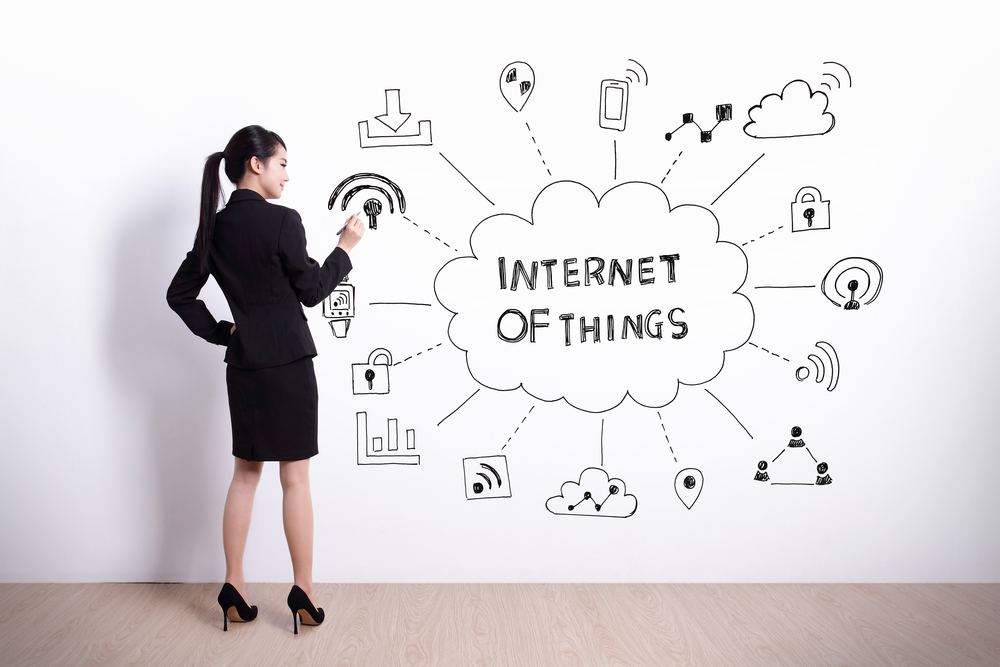The Internet of Things (IoT) is one of the most exciting prospects for businesses of our time, as it has the potential to revolutionise everything from the way companies operate and drive revenue to the types of goods, services and experience they deliver. It is forcing businesses to rethink how they interact with the world around them, and in particular their relationship with their customers.
The IoT market continues to be strong, with IoT hardware and connectivity revenues growing at about 20% per year and IoT services and analytics growing even more rapidly at around 40-50% annually, according to ABI Research.
While much of the hype focuses on consumer-facing IoT devices, businesses are leading the charge by putting connectivity at the heart of their strategy. Deloitte predicts that throughout 2015, 60% of all wireless IoT devices will be bought, paid for and utilised by enterprises.
However, for all its potential, IoT can still be a daunting prospect for many businesses. Drawing on more than a decade working with more than 2,000 enterprises across more than 20 industries, Jasper has identified five principles that can help any business, large or small, make the best decisions when considering IoT:
Start with services
The first step to success is to understand that IoT is not about things, it’s about service. The core value of IoT is the ability to transform companies from selling static products to delivering dynamic services throughout the life of those products. But this shift from a product business to a service business requires companies to first take a step back and determine which services they want to deliver.
> See also: Why the Internet of Things is more than just a smart fridge
Companies that focus first on the tactics of connecting their products often end up having to shift strategy later on. Those who start by defining the IoT services they want to deliver and then work backwards to develop their connected product strategy are the ones set up to succeed. That is because the latter approach is all about providing incremental value to the customer over time, which unlocks new revenue streams.
A great example of this is Volkswagen and its Car-Net program, which has been shipping connected vehicles since 2014. VW’s Car-Net services include a full suite of security features, maintenance assistance and navigation tools – all of which enhance the customer experience while creating ongoing revenue streams for VW.
Think long-term
As you plan your IoT business, think about how quickly and at what scale you want to grow. From the outset, look to choose technology and business partners that have flexibility and scalability built into their offerings, so that when the time comes, you can seamlessly expand across borders into new markets.
Make sure the IoT platform you choose has that global reach and makes it cost-effective and easy to introduce your IoT services to new regions/countries as customer demand requires.
Choose the cloud
Real-time visibility and control are vital when it comes to managing a connected services business and ensuring the best possible experience for customers at all times. That’s why the Software-as-a-Service (SaaS) model delivered via the cloud is a great fit for IoT businesses. It delivers the benefits of speed, efficiency and global access as well as lowering the cost of entry and supporting business scalability and agility.
For example, using a cloud-based platform means that in the case of any technical issues or the need to implement system updates, companies can automatically diagnose and repair issues remotely over-the-air, instead of having to issue product recalls or dispatch engineers out into the field.
Cantaloupe Systems is a great example of this, connecting vending machine companies to their vending machines through the cloud enables them to remotely perform maintenance and repairs as well as restock merchandise when necessary according to real-time information.
Automate to optimise
For each device that a business connects, it is responsible for the management, support diagnostics, billing and provisioning of services around it. For the average devices this results in roughly 102 real-time actions to be taken per year. With a modest deployment of 100,000 units, that equates to 10.2 million actions a year for the business. Any attempt to manually handle these processes would be highly inefficient and costly.
> See also: Gartner’s Internet of Things predictions
That’s why automation is so crucial in IoT – without it, you cannot recognise the gains in reduced response times and streamlined operations. Automation helps you be more agile and enables you to focus on the core parts of your operation that drive value.
Learn from best practices
Some of the most inspiring innovations come from the most unexpected industries. Take a look at how other businesses are using IoT and learn from best practices. In agriculture for example, companies like Semios are capitalizing on IoT to increase crop yields, preserve precious resources and improve sustainability and profitability.
Connected beer kegs are another great use case – brewers can deliver real time information on keg conditions and automate inventory replenishment to ensure beer remains at peak quality at all times. IoT-based services are even being used in law enforcement to fight gun-related crime in real-time.
Today, businesses around the world – and in every industry – are demonstrating that IoT is more than just hype. IoT is having meaningful impact on a global scale across categories as diverse as agriculture, healthcare, robotics transportation, utilities and many more.
Your company can be the next to unlock new profitable business models, foster innovation and create amazing new experiences for your customers – as long as you approach IoT with an open mind and a clear understanding of its potential for your business.
Sourced from Macario Namie, Vice President Strategy, Jasper







